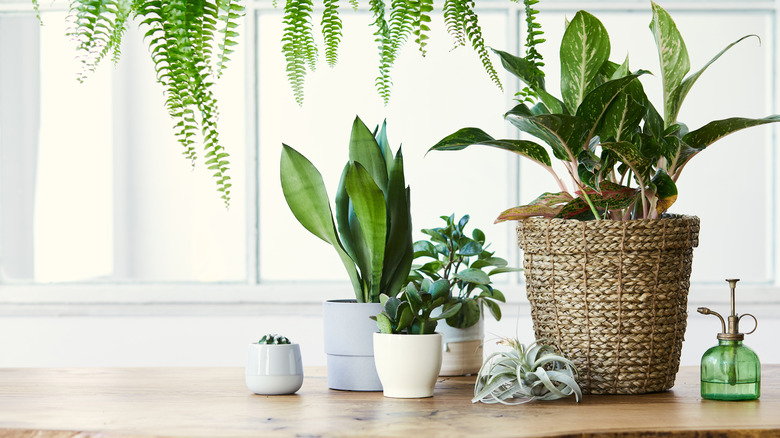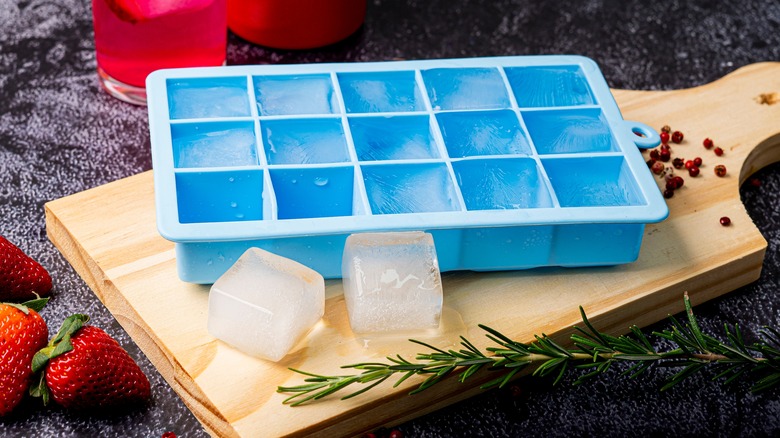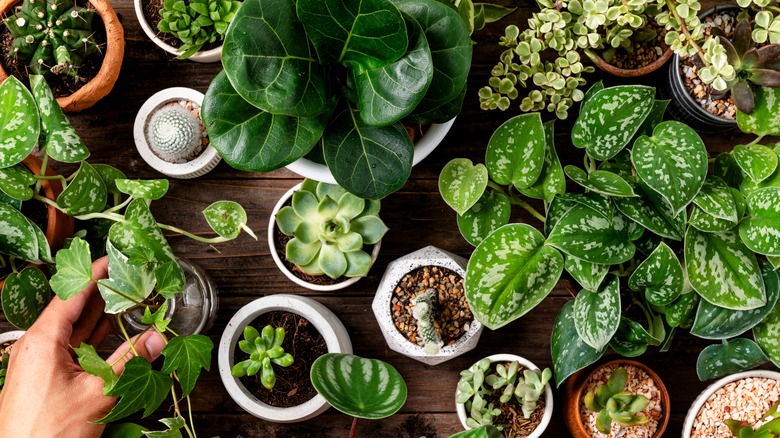The One Watering Trick That Will Keep Your Plants Hydrated All Winter
Watering your houseplants can be tricky. They can get root rot if you overwater them, but they'll dry up and die if you forget. Finding the right amount of water is even more challenging once winter begins. During this season, plants go into dormancy to conserve energy. They need to do this because the weather gets colder and the days have less sunlight, so they can't photosynthesize as much. They also stop growing or blooming flowers to prevent the tender stems from freezing, meaning they'll require less water. Happy Sprout explains that houseplants don't fully become dormant since they are inside and the temperature won't drop to freezing.
There are signs you can look out for to know if your plant is dormant. You should see little to no new growth, any flowers will have dropped, and some leaves will die. Don't worry about leaves falling; your plant is conserving energy and letting unhealthy foliage go. The most important rules to follow with a dormant plant are not to fertilize them and to water less. Here's how to keep them hydrated without overdoing it.
Use ice cubes
Ice cubes are an excellent trick to water your plants properly in the winter. They help you monitor the amount of moisture you give your plants. Each cube of ice is the same size, so you can easily add or take away from the amount you use depending on your plant's needs. Then you won't accidentally overwater them. Watching the amount of water you give your plants in winter is extra important because they need less than they usually get the rest of the year. This method is also great for plants that like their soil to be constantly moist.
Our Houseplants explain that as the ice cubes slowly melt into the potting mix, they consistently keep it moist. That way, you can water your plant less frequently. It will also ensure that the foliage doesn't get wet and develop problems like wilting leaves because the ice cubes are melting directly into the soil and the roots where it needs to go.
How to use ice cubes
The amount of ice cubes you use depends on the size and type of plant. Every plant has different light and water requirements that you should reference when deciding how much to give them. Southern Living recommends using two to three cubes for a small to medium-sized plant. You shouldn't use this method for large plants because they will need a lot of water, and you don't want a pile of ice cubes sitting in the pot. It's important to ensure that the cold cubes aren't touching any stems, leaves, or visible roots, or they could get damaged by the freezing temperature of the water.
During winter, it is crucial to check the soil's moisture before adding ice cubes. You can do this by sticking a chopstick, pencil, or finger in the dirt and seeing if it's wet when you remove it. If it is, then skip watering and recheck the next day.


